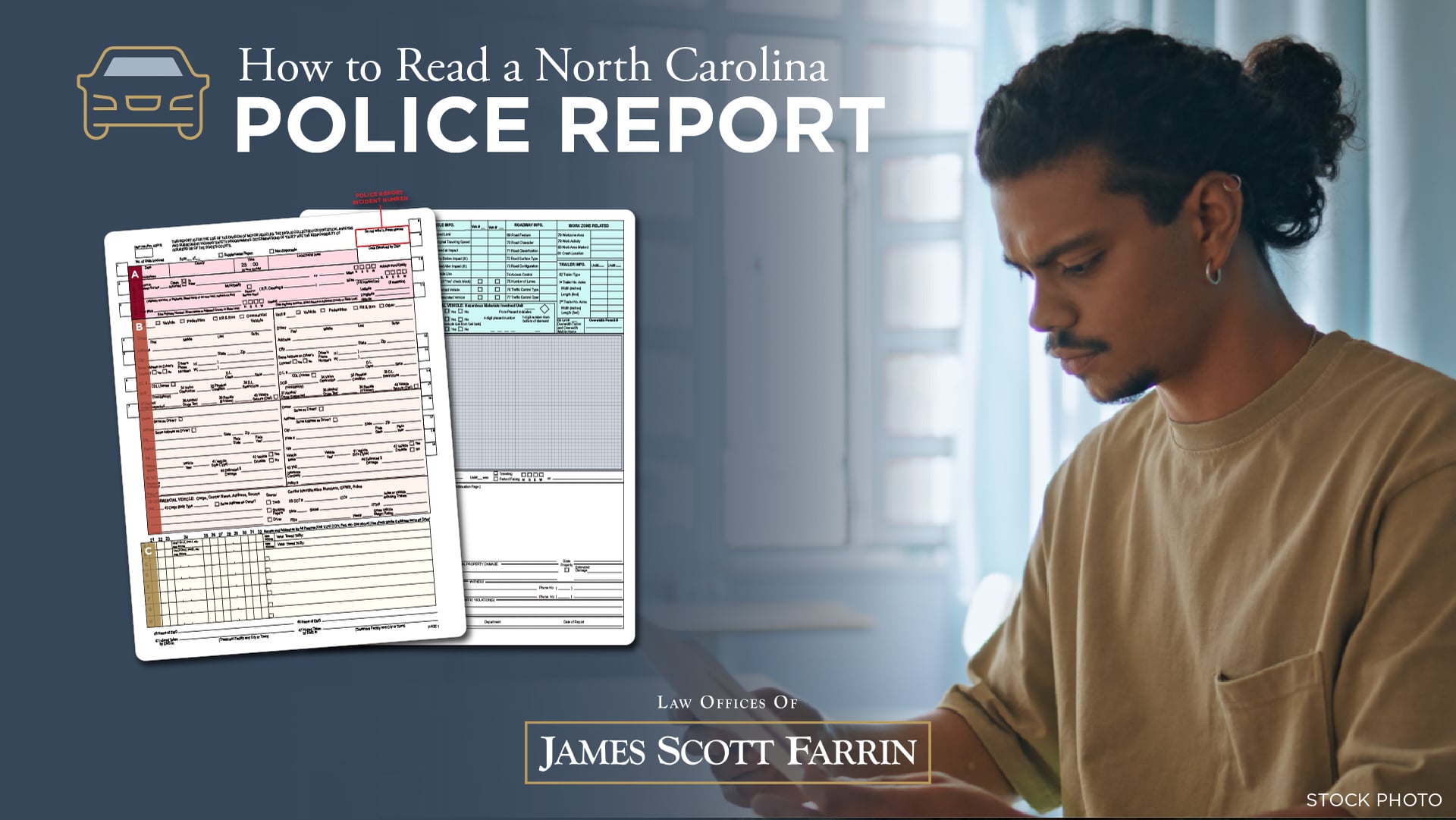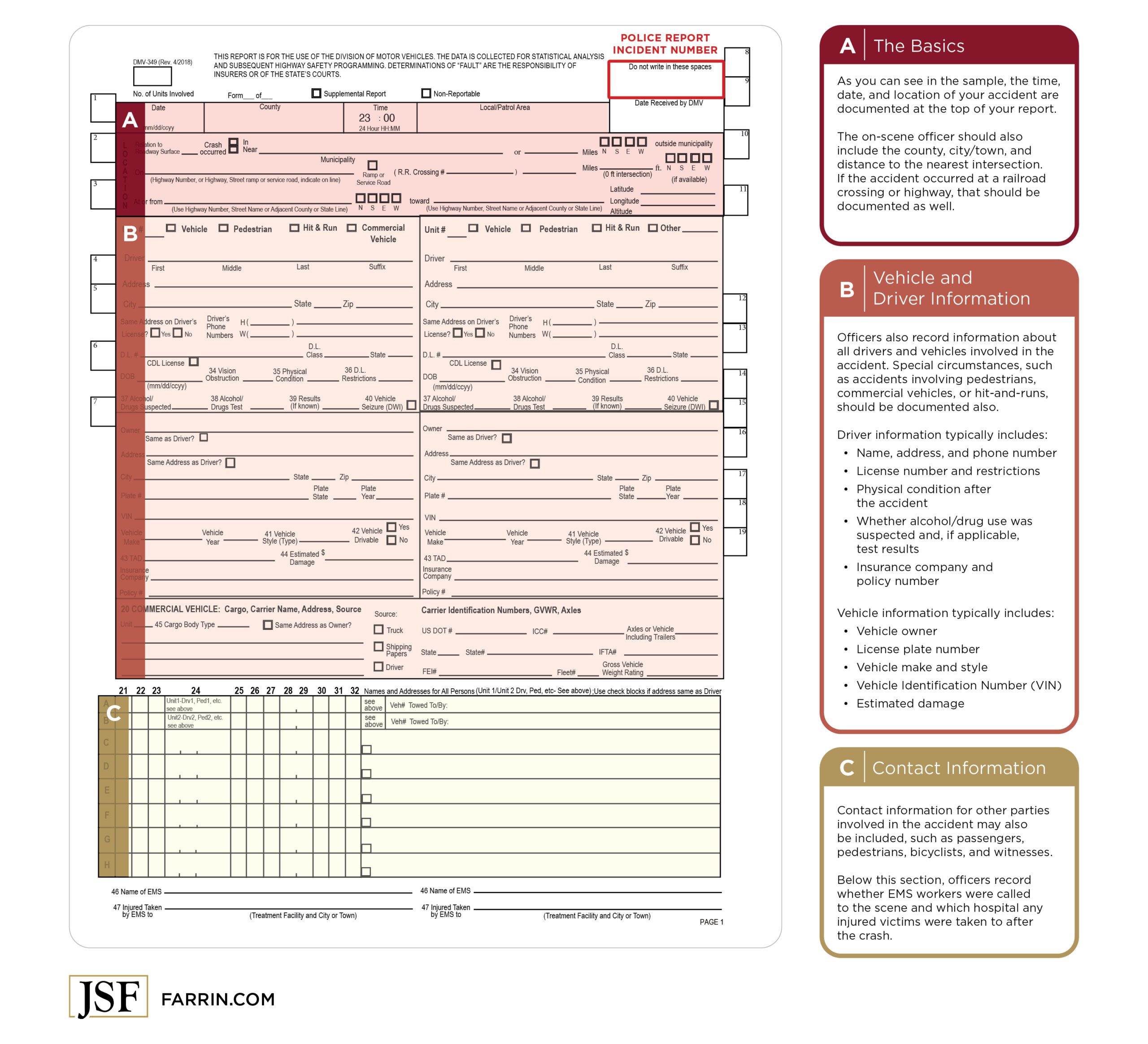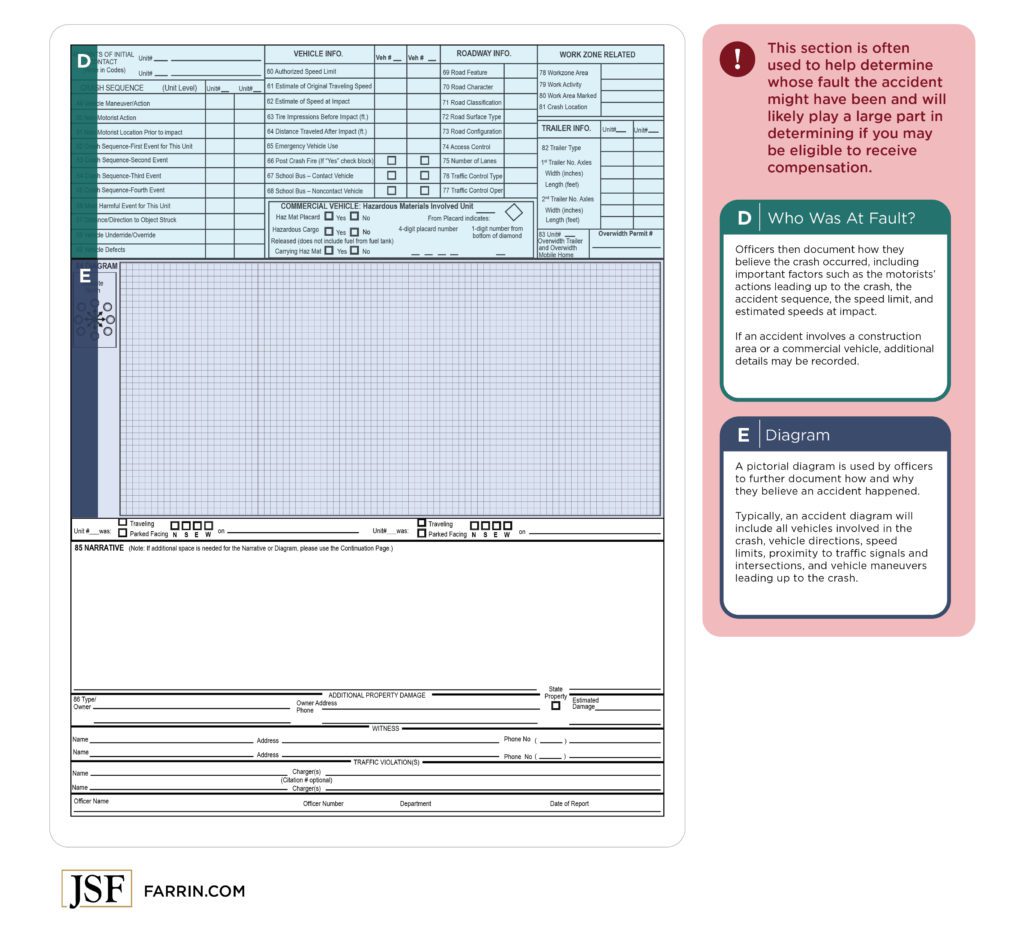
This page refers to How to Read a North Carolina Accident Report.
Since laws differ between states, if you are located in South Carolina, please click here.
How to Read a North Carolina Police Report
(and Why You Need to Know)
After you’ve been involved in a car accident, the officer at the scene will investigate the wreck and record their findings in a report.
This “accident report” can play a big role in determining how much an insurance company offers you for your damages.
This is especially true in North Carolina because North Carolina is a contributory negligence state. Basically, if the insurance company can prove that you were negligent in any way, you may get nothing — even if the other driver was clearly reckless. Whether that rule makes any sense is a discussion for another time. Right now, you want to protect yourself against the insurance company and their team that may be looking to try to prove you contributed to the accident in some way.
That’s why obtaining — and knowing how to read — an accident report is so important.
Obtaining Your North Carolina Accident Report
You may be wondering how to look up an accident report in North Carolina. Unfortunately, online is not currently one of your options for getting one. Here’s how it works:
All crash reports are collected at the North Carolina Division of Motor Vehicles. First, fill out this form. Then, mail it along with a $5.50 fee to the address on the form. You can also drop off the form and payment in person at the Raleigh headquarters (1100 New Bern Ave). Finally, you can obtain a copy of your crash report by calling (919) 861-3098.
NC Accident Report Guide: How to Read a Police Report
To help you, we’ve included a car accident police report sample with comments for you to use as a guide.
If you have questions about any information on your accident report, don’t hesitate to contact one of our North Carolina car accident lawyers.
Where is the Incident Number on a NC Police Report?
The police report incident number, also known as the DMV assigned crash case identifier, is located in the box in the top right-hand corner of the report. This box has the words “Do not write in these spaces” at the top to prevent anyone but the DMV from assigning the police report incident number. This number will help you identify your case when speaking with others about it.
Section A: The Basics
The section we’ve marked A on the police report is for the officer to record the setting and basic circumstances of the wreck. When and where did it happen? Specific details should be recorded by the officer. For example, did the crash occur on a service road or a highway entry ramp?
Section B: Vehicle and Driver Information
Section B, marked in orange, is where information on the drivers and their vehicles gets recorded. Or one of the parties may be a pedestrian who was struck by a vehicle. Special circumstances, including the involvement of a commercial vehicle (like a truck) or the accident being a hit and run incident, are also recorded here. Some officer observations, like possible vision obstructions in the cars or on the roadway or suspected alcohol/drug use, may appear here, as well.
Section C: Contact Information
Section C is where contact information for everyone involved in the wreck gets recorded for when you need to follow up. Page 1 of the North Carolina accident report ends with a place for officers to record details of any EMS professionals who responded to the crash scene.
Section D: Who Was At Fault?
Section D is for the police officer to offer their thoughts on how the accident happened. As the neutral and experienced agent of law enforcement on the scene, the officer’s observations and conclusions are taken seriously. The officer will say how they think things happened, who might have been speeding, and who might have ignored a traffic signal. Witnesses are listed near the bottom of page two of the police report.
Section E: Diagram
Section E, meanwhile, is for the officer to recreate the auto accident through some kind of diagram. Together, Section D and Section E may make the other party’s negligence clear — or it may raise questions of your own possible contributory negligence.
These two sections are not necessarily the end all and be all of the case, but knowing how to read your accident report and ensuring the details are accurate is certainly something you want to be comfortable with following your wreck.
Download a printable copy of How to Read a North Carolina Accident Report.
See Any Mistakes in Your Police Report?
Carefully review the entire police report for mistakes. The smallest mistake, like the wrong time of day, could impact your case. If you believe your report contains errors, contact an attorney immediately.
If you’ve been injured in an accident and are concerned about your report, or just want to try to make sure you’re treated fairly, call us at 1-866-900-7078. One of our experienced car accident attorneys will evaluate your case (for free!).




